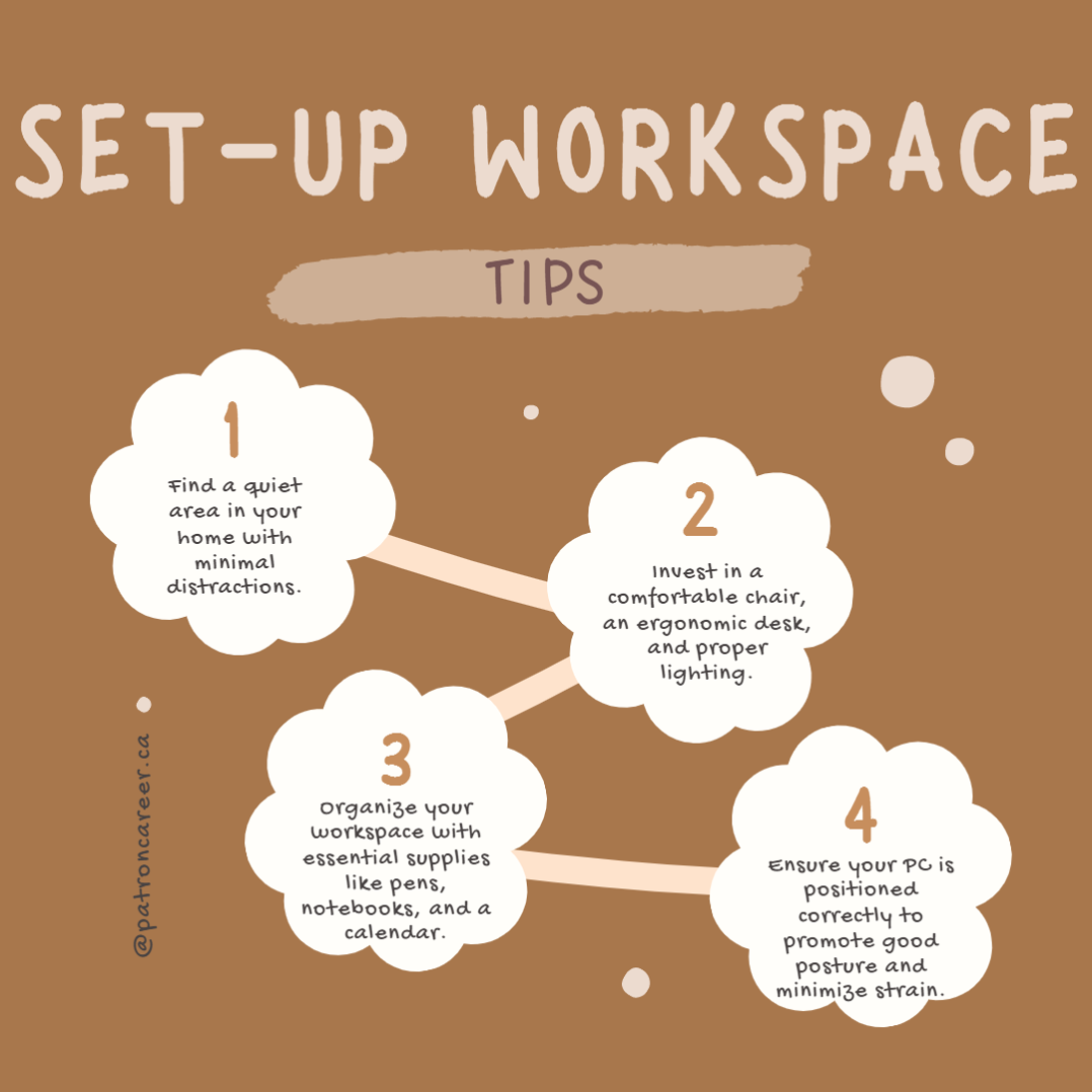
Navigating Workplace Burnout
21 June, 2023
Patron Career Staffing firmly believes in adopting a tailored approach to meet temporary and permanent recruitment needs. We safeguard the interest of our clients by finding such workers who are knowledgeable and reliable.
About UsNeed help? Make a Call
32 Dundas Street East Unit A, L5A1W2

The concept of remote working arrangements escalated with the emergence of the global Covid-19 pandemic, leaving organizations with no other choice. It has revolutionized traditional working culture. As more companies worldwide are embracing work-from-home culture, employees must suffice with the right tools, strategies and knowledge to kick start their remote employment. While stepping outside of a company’s physical premises, remote workers whether seasoned or new hires need our handbook for complete guidance on at-home work routines.
In this article, we’ll explore different aspects of remote work that will help individuals to optimize their work environment, retain focus and maximize output. Let’s dive in!
What is the ALL-REMOTE Handbook?
It is a comprehensive manual document specifically tailored to remote work that assists remote employees in their everyday endeavours while working from home. Often companies don’t think about providing an employee handbook until there’s a demanding need. Here’s why it is essential to craft and deliver such help guides:

Creating An Optimal Remote Work Setting
1. Curate a Dedicated Workspace
For an effective work-from-home scenario, an employee must separate office space for undisturbed focus and attention. It will also ensure power-packed productivity and separate work life from personal life. Such a dedicated work area will free employees from distractions and improve concentration. There are other ergonomic considerations to ensure such as a good posture and a comfortable chair, desk and proper lighting.

2. Connectivity and Technology Set-Up
Virtual meetings, PCs, research, etc. all rely on good technology that must be adequately provided at your workspace. The individual has to ensure reliable and secure network connection and apt hardware such as PCs, laptops, webcams, keyboards, headsets and so on. Remote work is incomplete without such tools. Other tips for a smooth work-from-home experience:
Establish A Productive Remote Work Routine
1. Importance of SMART Goals
SMART stands for- Specific, Measurable, Achievable, Relevant and Time-Bound goals. The object is clear- prioritize your work and professional goals for utmost productivity. You have to align your work goals with the company objectives as insinuated by your employer. Smart goal setting may work wonders for remote employees because it promotes focus, motivation and engagement in the employees.
Learn more about how to formulate your Remote Smart Career Plan, by clicking here .
2. Learn To Manage Your Time
Time management is key as remote work essentially boils down to allotting time for rejuvenation activities and work goals. With work blocks and breaks in the schedule, you can master productivity and promote a healthy work-life balance.
Our Tip- pay heed to incorporate time-blocking techniques via apps that track your time effectively. Learn to set priorities and avoid multitasking.
3. Balancing Work and Personal Life
Often remote employees fall trapped into differentiating the boundaries between work and personal life. You have to redact your home workspace in a manner that is not only peaceful but also brings good vibes. Employees that create work schedules and indulge in practising well-being activities save themselves from stress and burnout.
Communication and Collaboration in a Remote Setting:
1. Communicating with ease
Communication is a key component of successful remote work. Employees should practice clear and concise written communication, follow proper email etiquette, and utilize video conferencing tools for face-to-face interactions. Active listening and providing timely responses are crucial for effective remote communication.
2. Collaborating Remotely
Remote collaboration requires utilizing suitable tools and strategies. Employees should leverage project management software, virtual whiteboards, and file-sharing platforms to facilitate collaboration with colleagues. Regular check-ins and clear communication channels are essential to maintain alignment and progress on shared tasks and projects.
Overcoming Remote Work Challenges
1. Battling Isolation and Maintaining Motivation
Remote working is not child’s play. Remote work can lead to feelings of alienation and forlornness. Employees should actively seek opportunities to connect with colleagues through virtual meetings, team-building activities, and informal chats. Virtual co-working sessions and finding ways to celebrate achievements can help maintain motivation and engagement.
2. Managing Commotions
Remote work environments can have a multitude of distractions. Employees should create a dedicated workspace that minimizes external interruptions. Utilizing productivity apps, implementing strategies like the Pomodoro technique, and persistent communication with family members, work friends or roommates can help manage distractions effectively.
Remote Manifesto:
Flexible working arrangements such as remote work have acquired significant momentum in the professional landscape. Remote work is here to stay. To fulfil this popularized concept, remote workers should be fully equipped with a detailed articulation about the do’s and don’ts of working from home. By familiarizing themselves with this modern work landscape, even remote workers can excel and thrive in their company as well as in their remote work journey.
Stay tuned for more informative articles and newsletters.
